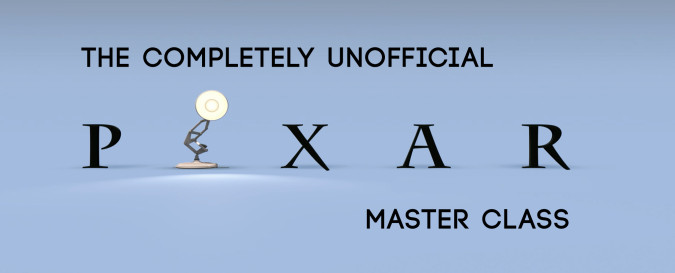UPDATE: Following the revelations about Pixar executive John Lasseter’s long history of sexually harassing female employees, I find it impossible to reconcile how the animation studio could build a creative culture that undeniably produces quality storytelling and yet simultaneously mistreats an entire segment of its employees.
The truth is, Pixar’s creative leaders are overwhelmingly male, and even if it turns out that Lasseter was alone in sexually harassing female employees, the other senior leaders are complicit because they allowed it to happen. Which means that Pixar’s amazing creative culture isn’t so amazing or inclusive after all.
Saddest of all is the unquantifiable loss of creativity caused by the corrupt leadership at the top of the company. How many wonderful creative women were stifled or ousted by a hostile work environment? How many more amazing stories could’ve been told if Pixar had only respected all of its employees instead of indulging their lascivious boss?
The Lasseter scandal has rightfully tarnished my long-held admiration for the studio, but this post will remain up for now, because I still believe in many of the creative lessons we can learn from Pixar. We just need to take them all with a huge grain of salt. I am interested to see how the studio moves forward in the wake of this scandal, and if they can address their glaring issues with inclusiveness, diversity, and equity in order to make their creative culture truly great after all.
ORIGINAL POST: I have a confession to make: I have a slight obsession with Pixar. Well, maybe obsession is too strong a word. More of a fascination with and deep admiration for their company culture and the enduring quality of their work.
Pixar, the animation studio whose first film Toy Story revolutionized feature-length animation, is built on the principle that art challenges technology and technology challenges art, and the result is a consistent stream of critical and box office successes.
My obsession with Pixar probably stems from the fact that I myself am a creative professional. And in my quest to read for my own professional development, I’m constantly looking for books that relate to the challenges of a creative career. Unfortunately, I’ve discovered that creatives are really an underserved group of people when it comes to professional reading. There are a million books about entrepreneurship, best business practices, corporate leadership, etc., but very little written about the kind of work I do and office environments in which I’ve made my career.
When I read typical “business books,” I can usually distill from them the ideas that apply to my career, even though I don’t work in a classic cubicle-filled office. But when I read about Pixar, it’s much more familiar and accessible, because though I’ve never worked there, I see in Pixar environments and people and challenges similar to those I’ve experienced in my two-decade career in TV production.
The great thing about Pixar, though, is that even if you’re not a creative professional, it’s still very relatable. Most readers are familiar with at least one of Pixar’s films, which makes reading about the company fun and accessible. Pixar is also an excellent example of a successful, sustainable creative culture, and increasingly, professionals in other industries are learning the value in understanding and nurturing creative practices. It is also a company that continues to dominate in its industry, producing work that is both top quality and financially successful — all lessons anyone in any industry can learn from.
There’s much to glean from Pixar’s story, and so I’d like to share a few of the resources I’ve found that make learning about Pixar both entertaining and valuable. This is by no means a comprehensive list, but rather a totally unofficial, do-it-yourself Pixar master class I’ve assembled over the years:
- Steve Jobs was one of the original founders of Pixar when it spun off from Lucasfilm, and Walter Isaacson’s biography is a fantastic read about the brilliant, eccentric leader. (It also happens to be a great “gateway” book for a pro book club, an accessible first book that will appeal to a wide range of people. Read more here.)
- Author David A. Price offers a thorough history of the company in his book The Pixar Touch.
- Written by Pixar co-founder Ed Catmull, Creativity, Inc. also offers a history of the company, but from the inside. Perhaps more valuable, though, are Catmull’s observations about how to build and maintain a sustainable creative culture, powerfully bullet-pointed at the end of the book in an appendix entitled “Starting Points: Thoughts for Managing a Creative Culture.” Read more here.
- After reading so much about Pixar, it’s interesting to actually see the company in action in the well made and engaging 2007 documentary The Pixar Story.
- Online education platform Khan Academy recently partnered with Disney to offer Pixar in a Box, an online curriculum that explores how the animation studio uses STEAM (Science, Technology, Engineering, Math + Art) to create its top-notch animation.
- A Variety article on John Lasseter’s ouster from Pixar, and one former intern’s experience working with Lasseter.
- Miscellaneous interesting tidbits about Pixar:
- “Managing Creativity: Lessons from Pixar and Disney Animation” by The Pixar Touch author David A. Price – Harvard Business Review, April 2014
- “How Pixar Used Moore’s Law to Predict the Future” by Pixar co-founder Alvy Ray Smith – Wired, 4/17/13
- Pixar’s 22 Rules of Storytelling, an unofficial list of storytelling tips that went viral, originally tweeted in 2011 by former Pixar story artist Emma Coats
- Complete lists of Pixar’s feature films and theatrical shorts, from the company’s official website.
NOTE: As an Amazon Associate I earn from qualifying purchases.



